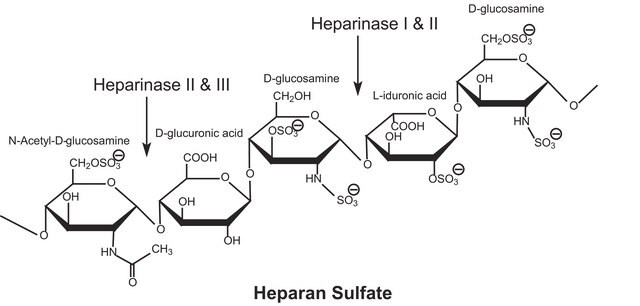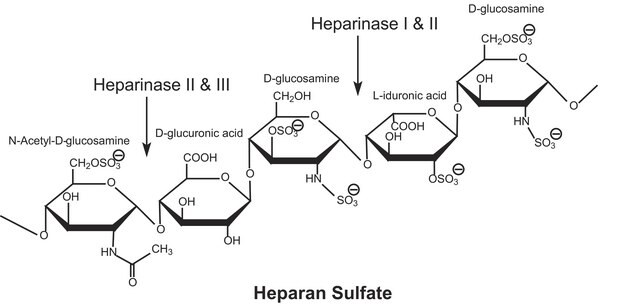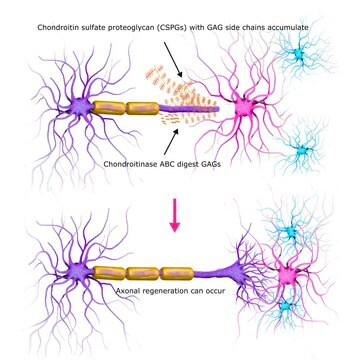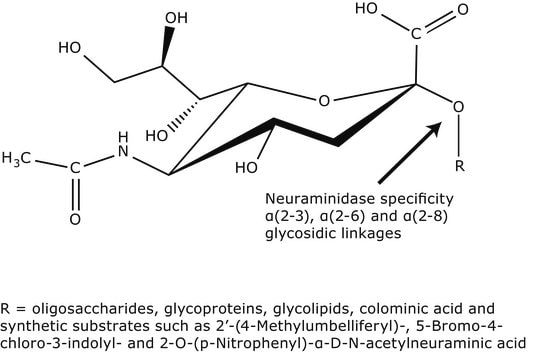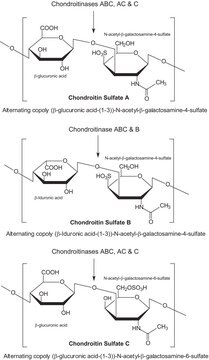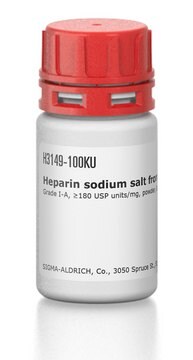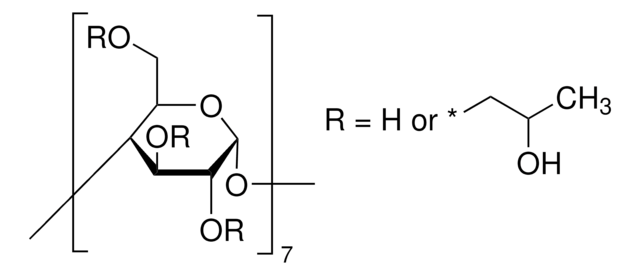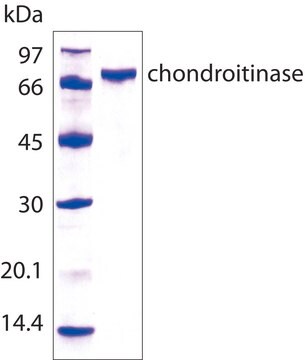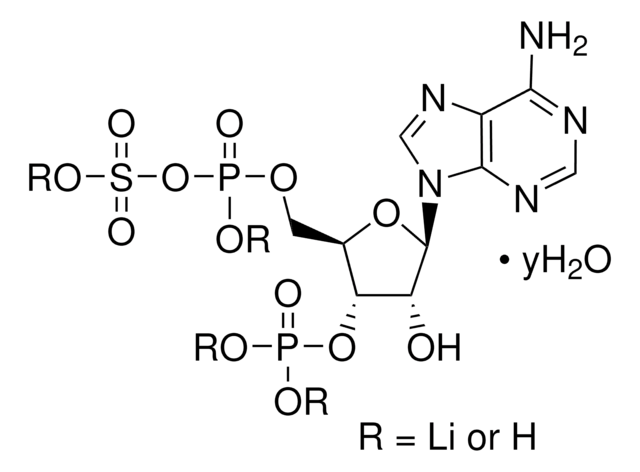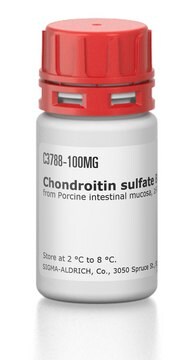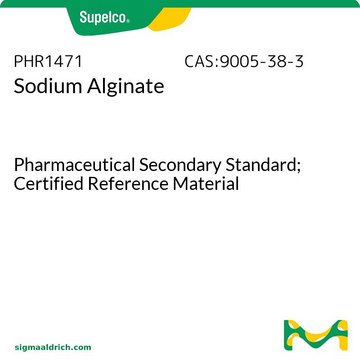H6512
Heparinase II from Flavobacterium heparinum
Lyophilized powder stabilized with approx. 25% bovine serum albumin, lyophilized powder, ≥100 units/mg protein (enzyme + BSA)
Sinônimo(s):
Heparin lyase II
About This Item
Produtos recomendados
fonte biológica
bacterial (Flavobacterium heparinum)
Nível de qualidade
conjugado
conjugate (Glucosaminoglycan)
Formulário
lyophilized powder
atividade específica
≥100 units/mg protein (enzyme + BSA)
peso molecular
84.1 kDa
temperatura de armazenamento
−20°C
Descrição geral
Aplicação
- for digestion of heparin sulfate during exosome isolation
- for digestion of heparin sulfate in notochordal cell conditioned media (NCCM) to investigate the content of glycosaminoglycans in NCCM
- as a component of digestion buffer during cell surface glycan processing
- as a component of heparin lyase (HSase) mix to remove the heparin sulfate on the 293ͰT/ACE2 cell surface and study the effect of histones on the infectivity of pseudovirus
Ações bioquímicas/fisiológicas
Definição da unidade
Outras notas
Código de classe de armazenamento
11 - Combustible Solids
Classe de risco de água (WGK)
WGK 3
Ponto de fulgor (°F)
Not applicable
Ponto de fulgor (°C)
Not applicable
Equipamento de proteção individual
Eyeshields, Gloves, type N95 (US)
Escolha uma das versões mais recentes:
Já possui este produto?
Encontre a documentação dos produtos que você adquiriu recentemente na biblioteca de documentos.
Os clientes também visualizaram
Artigos
A key resource feature at our Enzyme Explorer section of biochemicals is "Enzymes for Carbohydrate Analysis and Digestion." Offering kits, reagents, analysis, lists of enzymes related to PTM and carbohydrate metabolism.
Glycosaminoglycans are large linear polysaccharides constructed of repeating disaccharide units.
Nossa equipe de cientistas tem experiência em todas as áreas de pesquisa, incluindo Life Sciences, ciência de materiais, síntese química, cromatografia, química analítica e muitas outras.
Entre em contato com a assistência técnica